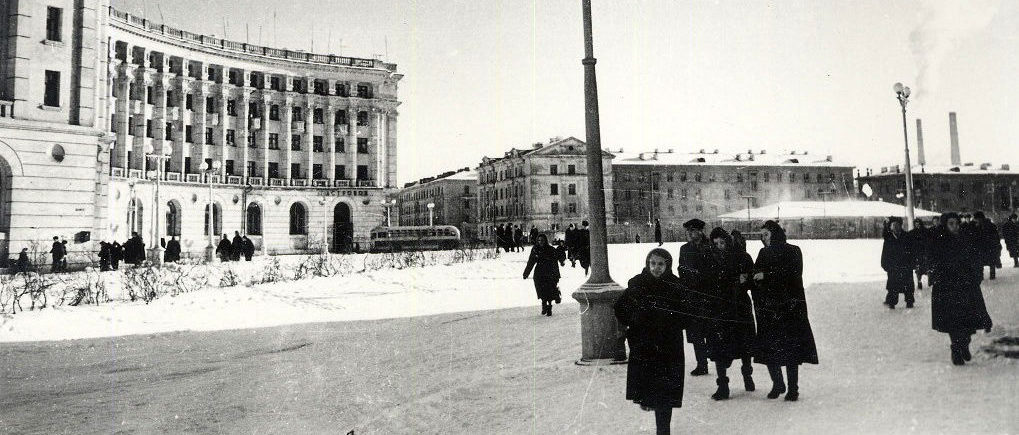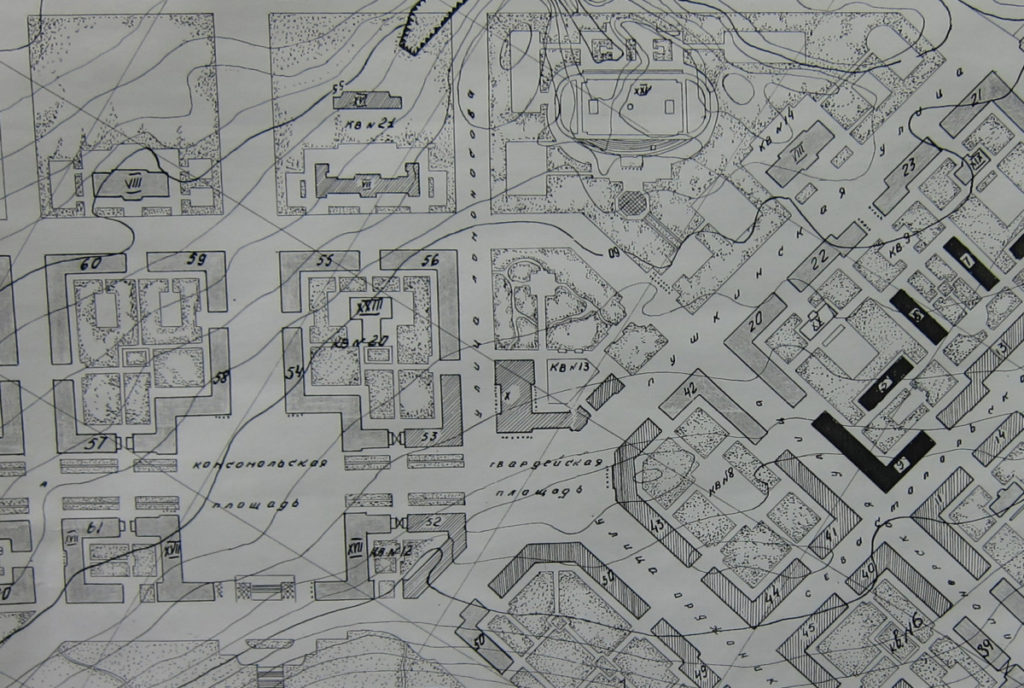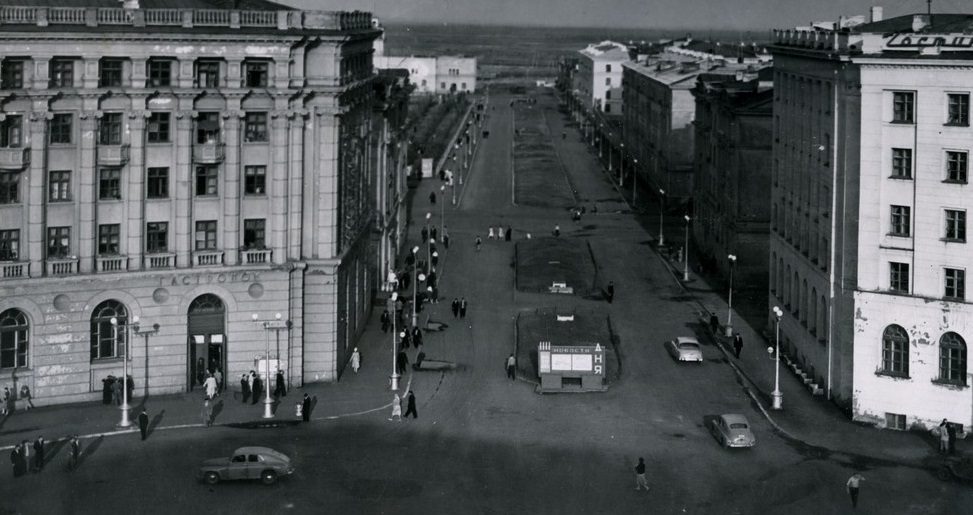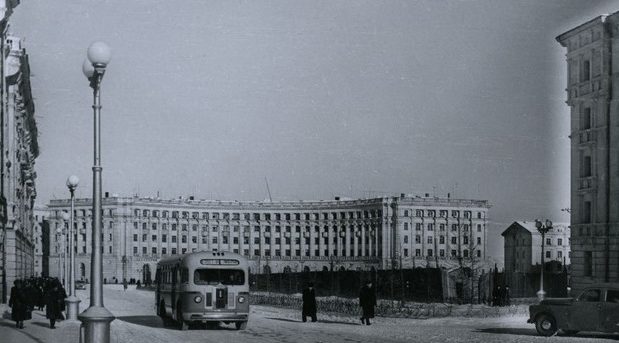#ARCTIC. #SIBERIA. THIS IS TAIMYR. It should have consisted of club and theater buildings with a 1,000-seat auditorium, a 300-seat cinema and a restaurant-type buffet.
The club building was supposed to stand at the confluence of Pushkin street and Gvardeiskaya square. It was planned to place a library, lecture and sports halls there. The main building’s portico was proposed to be decorated in a classical style with rich decorations: a colonnade, bas-reliefs and Gorky and Pushkin’s bronze sculptures.
Probably the street adjoining Gvardeiskaya square was named after Pushkin because of that planned club building. It appeared on paper under this name in the early 1940s. And in reality in 1947, the first Norilsk’s streets Sevastopolskaya, Pionerskaya (future B. Hmelnitsky street), Monchegorskaya (future Kirov street) had already received their names and Pushkin street was still nameless.
School No. 4 was the first building on this street. It was built in 1950 in just 67 days. The construction began on June 25, and on August 30 the four-story building was put into operation. Children from the surrounding houses and the boarding school for the Far North’s indigenous inhabitants were taught in the school. They lived in the Valek village and went to study by bus. In the 1950s the poet Ogdo Aksenova and the artist Boris Molchanov were among the students.
But plans to build a large club have never materialized because the architects decided to change the Gvardeiskaya square’s configuration. It became round, not square. And instead of five streets, only three crossed on it: Komsomolskaya and Lomonosov street were left without access to the main avenue. The main grocery store’s semicircle was built instead of the L-shaped club building in 1953.
In the History Spot photo project previous publication, we told about one of the first Norilsk’s geologists Alexander Vorontsov.
Follow us on Telegram, VKontakte.
Text: Svetlana Ferapontova, Photo: Nornickel Polar Branch archive








